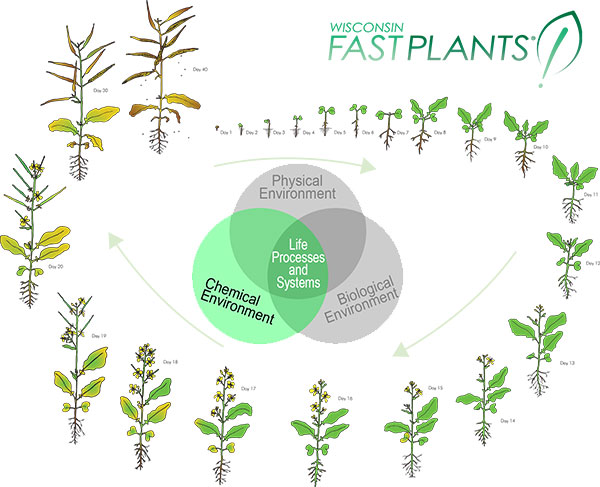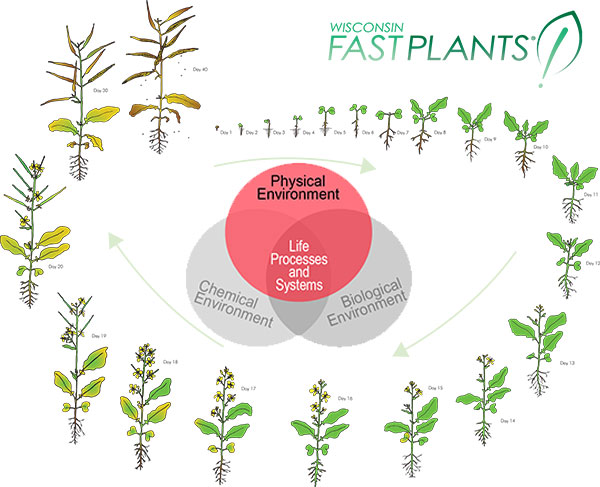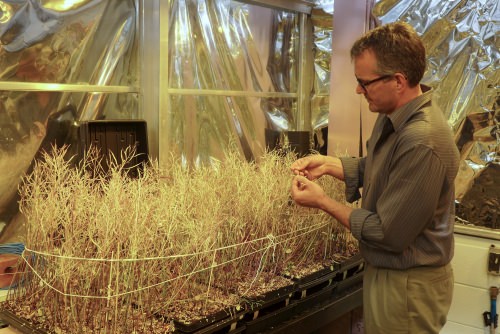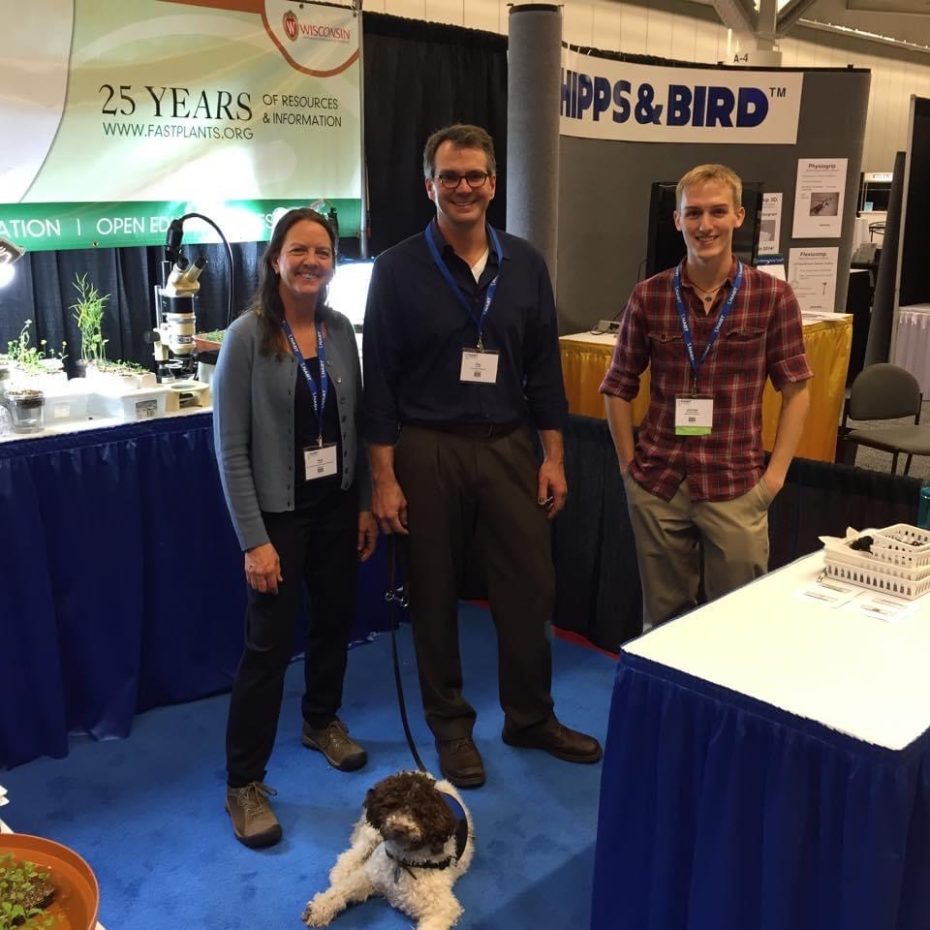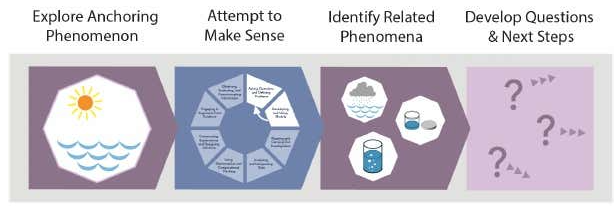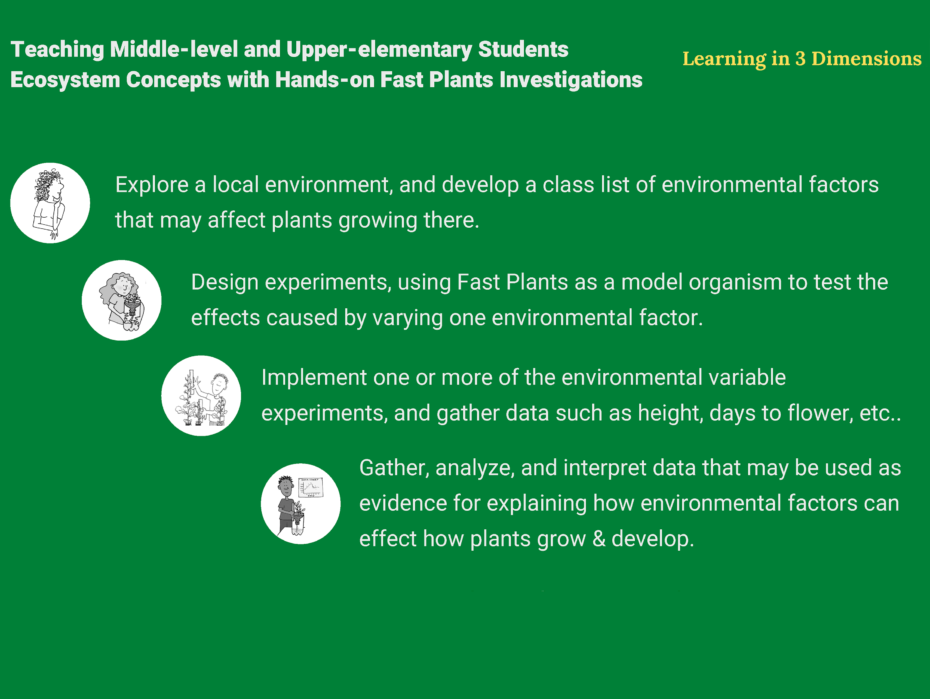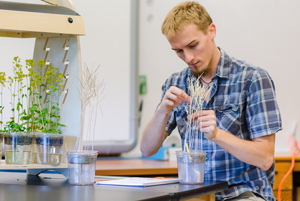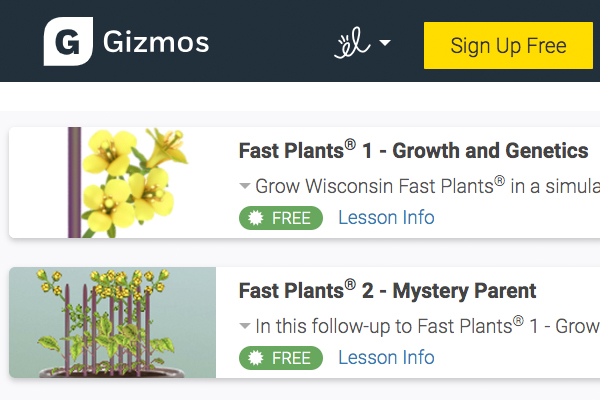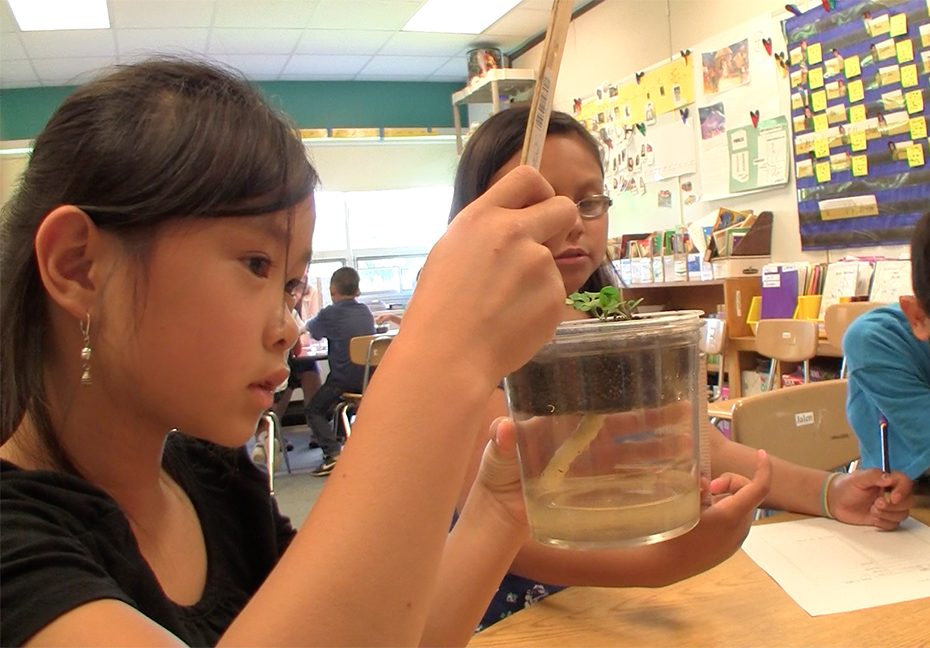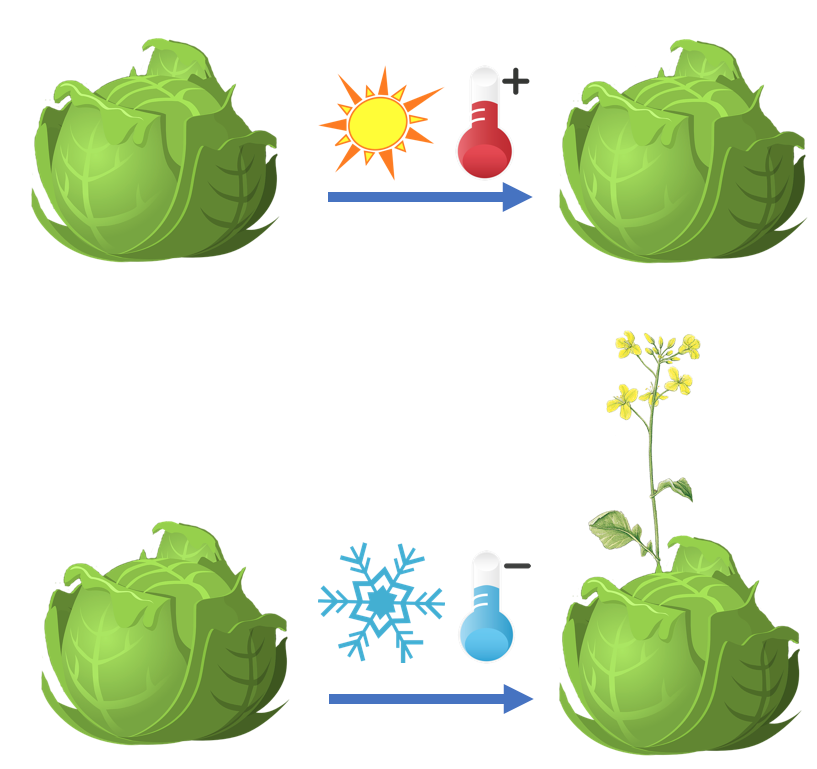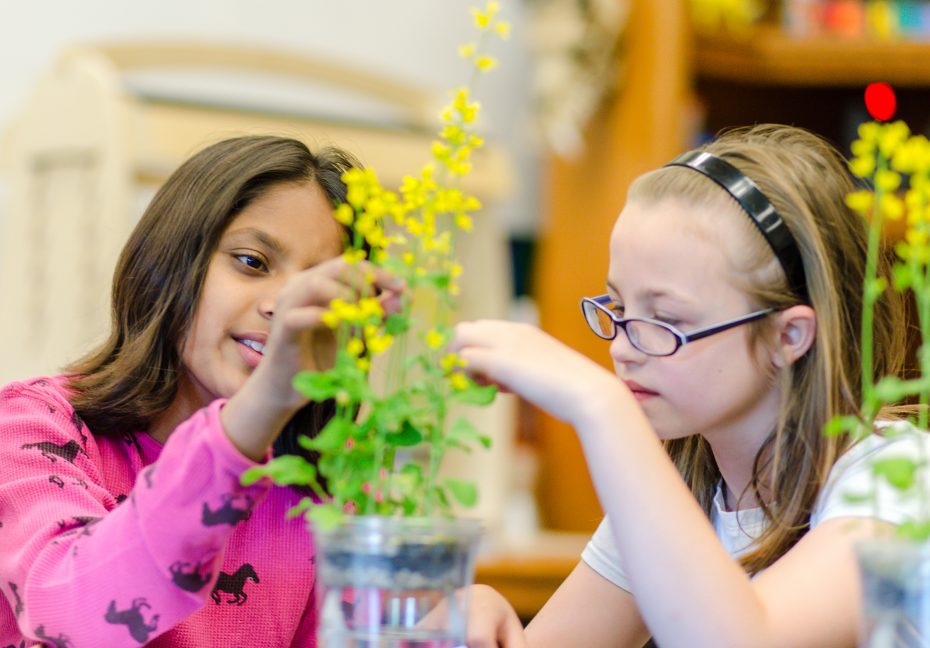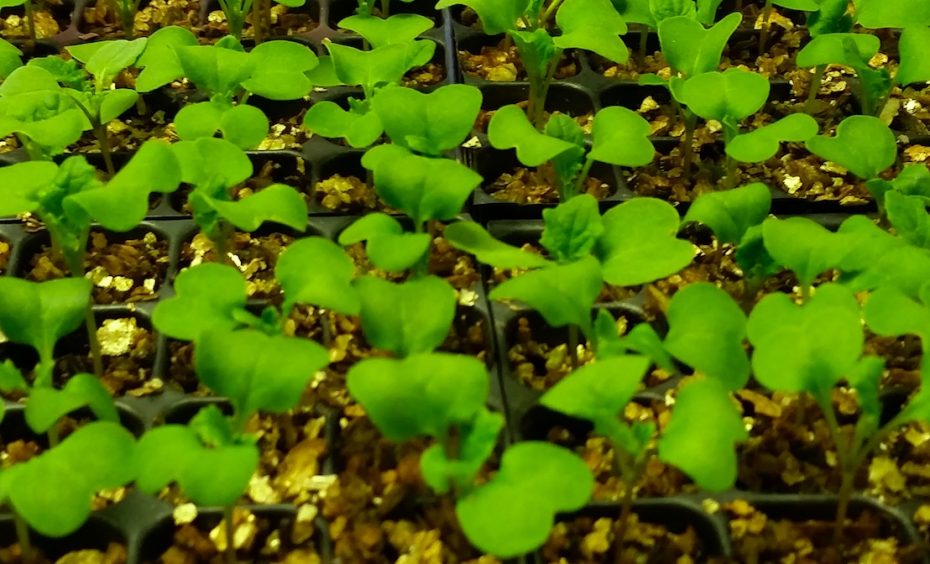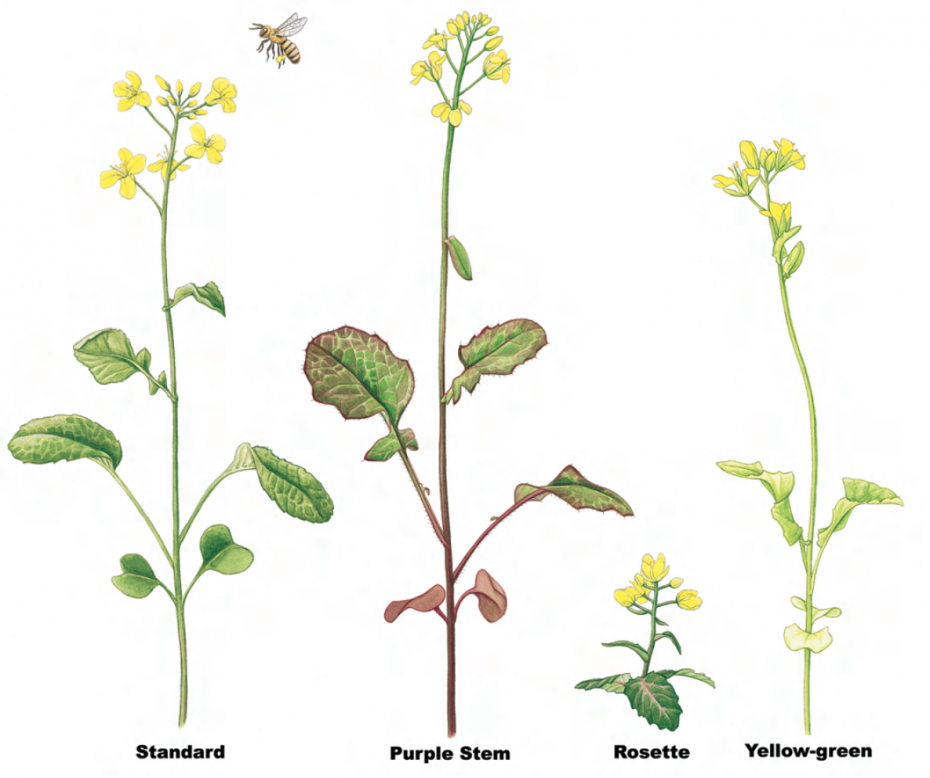Growing healthy Fast Plants is easy if you understand how the environment can affect growth and development. Three broad categories of environmental factors influence how an individual plant matures through its life cycle: 1) the physical environment, 2) the chemical environment, 3) the biological environment. This post is part of a series explaining how key chemical environmental factors can impact plants, Wisconsin Fast Plants in particular. Our website describes …
Biological Environment: Growing Healthy Fast Plants
Environment plays a key role in how your Fast Plants grow and develop through their life cycle. Classifying environmental factors into three broad groups can be useful for studying their effects: 1) the physical environment, 2) the chemical environment, 3) the biological environment. This post is part of a series that explains how key environmental factors can impact plants. We focus here on biological factors and Wisconsin Fast Plants. Our website …
Physical Environment: Growing Healthy Fast Plants
Growing healthy Fast Plants is easy if you understand how the environment can affect growth and development. Three broad categories of environmental factors influence how an individual plant matures through its life cycle: 1) the physical environment, 2) the chemical environment, 3) the biological environment. This post is part of a series explaining how key environmental factors–physical, chemical, and biological–can impact plants, Wisconsin Fast Plants in particular. Our …
Plant Research in Space
Fast Plants in Space: Next Steps with Amanda Nguyen & Emily Calandrelli Long-term space exploration depends on many factors, and plant research in space is one of the most pressing. For decades, Wisconsin Fast Plants have helped scientists and educators explore biological mysteries, and now, they’ve returned to orbit, contributing to plant research in space. Blue Origin’s Fall 2024 mission …
Emily Calandrelli Teams Up to Take a Fast Plants Space Experiment on Blue Origin Flight
What if you got to put a Fast Plant Space Experiment on a rocket? What questions would you ask, and how would you design your experiment? We got that very opportunity when Emily Calandrelli, The Space Gal, offered us the chance to send seeds and experiments into orbit with her aboard Blue Origin’s NS-28 Mission. We also recently worked with …
Fast Plants in Space: Past, Present, and Future
Wisconsin Fast Plants® of the Department of Plant Pathology at UW-Madison are helping scientists explore how plants can thrive beyond Earth, and they’re paving the way for future space farming and sustainable life support systems in space. In fact, if you follow on Instagram #fastplantsinspace (@fastplants) we’ll be sharing about Fast Plants in flight on Blue Origin with Emily Calandrelli …
CTE: Plant Systems Career Pathway cultivates success with Fast Plants!
Future Depends on Plant Systems careers In the ever-evolving landscape of agriculture and plant sciences, the need for hands-on experiences growing plants has never been more critical. Career Technical Education (CTE) courses in the Plant Systems Pathway are foundational for future professionals in a wide variety of plant science fields, and one valuable addition that stands out is the incorporation …
Fast Plants Conferences 2023 NABT CAST ACTE Booth Resources
It’s the season of professional development conferences for teachers, educators, and our Fast Plants Team! Come visit our booths in the exhibit halls, they’re always packed with living Fast Plants, recommended resources, and good conversation. Jackson is attending NABT in Baltimore; Hedi and Dan are attending CAST in Houston and ACTE in Phoenix! This blog post summarizes what you’ll find …
Dihybrid Inheritance Study Using Wisconsin Fast Plants – Open Source Educator Resources
Blog Post Sections Announcing Dihybrid Inheritance Study Teaching Tool Study and Resource Overview Dihybrid Inheritance versus Monohybrid Inheritance Patterns: Which to Choose? Identifying Traits Rosette-Dwarf and Anthocyaninless (Non-Purple) Study Timeline Learn More and Access Resources Announcing Dihybrid Inheritance Study Teaching Tool The Wisconsin Fast Plants team is proud to announce the release of a set of resources to support teaching …
Investigating Brassicas Around the World with Fast Plants – Open Source Lesson
Blog Post Sections Announcing Brassicas Around the World Lesson Hands-On Fast Plants Experiment Models Brassica Selection Around the World This Investigation is Ideal for… Connecting Science and Culture Relevance of Fast Plants and Brassicas Around the World Announcing Brassicas Around the World Lesson The Wisconsin Fast Plants team is proud to announce a revision and content overhaul to one of …
New DIY Grow Lights for Fast Plants
Superior Grow Lights: Easy build your own What grow lights do I need for growing Fast Plants? That’s an important question. However, it also may be the start of a missed learning opportunity, if we’re not mindful. Consider for comparison your reaction when a student asks: “What do I need to know for the test?” Likely, your response includes hoping this …
Ecosystem dynamics investigations
Why hands-on ecosystem investigations? Ecosystems are highly complex systems; how can we support learners to grasp the effects on populations when one component of an ecosystem changes? Using a model ecosystem and model population in a hands-on investigation is an effective teaching strategy. In addition to making abstract ecosystem concepts more concrete, using Fast Plants as a model organism in …
New! Polycots Fast Plants Seed Line: Engaging & versatile for selection experiments
Polycot seedlings are easy to distinguish just a few days after germination! Our new Polycots seed line of Fast Plants features a trait that students can easily see at the seedling stage. In addition, we’ve developed a procedure for producing parental (Generation 1) and offspring (Generation 2) Polycot seed stocks, so it is not necessary for students to produce their own …
Preservice teachers on the frontline in ending plant blindness
Preservice teacher learners become effective teachers of science by developing strong content and content pedagogy knowledge that support all learners. In other words, the learning arc for preservice teacher learners is multilayered and jam-packed! So, it’s a tall order to hope that future teachers of science–elementary and secondary–are the solution to our national epidemic of plant blindness. “Plant blindness” may …
NEW! ExploreLearning releases Wisconsin Fast Plant® simulation Gizmos®
Two Wisconsin Fast Plants® simulation Gizmos® were created as a collaboration between ExploreLearning and the Wisconsin Fast Plants Program. These simulations were designed to support a variety of investigations and growing Fast Plants. AND they replace the simulations created nearly two decades ago that can no longer function on modern operating systems! Simulations complement physically growing Fast Plants Using these Gizmos during or after growing Fast Plants, …
Investigations with Wisconsin Fast Plants lead to powerful learning
Teaching and Learning with Fast Plants Investigations We know it is important to “help students make sense of the natural world by designing and carrying out authentic, student driven investigations (Wingert & Bell, 2015).” Compared to other living organisms, Wisconsin Fast Plants are easy to manage and very responsive to factors in their environment. In addition, many easy-to-observe Fast Plant phenotypes …
Flowering and the Role of Vernalization
A plant’s transition from vegetative growth to reproductive/flowering growth is a complicated process. In order for a plant to complete its life cycle and produce viable seeds, flowering must occur under conditions that encourage seed production. Plants are able to detect a variety of internal and environmental signals that influence floral development. Internal signaling is via production and diffusion of …
Three mistakes to avoid for growing healthy Fast Plants
Maybe you’ve grown Wisconsin Fast Plants before, or perhaps you’re just getting started–either way, we all want to grow strong, healthy Fast Plants. Nobody wants tall, spindly plants that need support or sickly plants that barely flower. No problem! Read on, and we’ll explain three common pitfalls to avoid when setting up growing conditions that support healthy Fast Plant growth. 1. Not …
Inheritance and Genetics: Observing Variation and Measuring Selection in Fast Plants
Variation is a fundamental attribute of life; understanding its nature is important to all. Wisconsin Fast Plants are an ideal model for teaching this concept, with easily observable variation in many plant traits. This variation can be observed, described, and measured or quantified to gain greater understanding of plant traits. Development of selection experiments allows analysis of recorded data and measuring …
Inheritance and Genetics: Understanding Patterns of Inheritance in Fast Plants
Wisconsin Fast Plants are an ideal model organism for observing and learning about inheritance patterns! Monohybrid and Dihybrid crosses demonstrate Mendelian patterns while other genetic stocks provide opportunity for observing cytoplasmic traits and developing of selection experiments. What inheritance patterns are observable in Fast Plants? Mendelian traits: monohybrid cross this investigation focuses on the genetics of the plant stem color trait Mendelian traits: dihybrid …
- Page 1 of 2
- 1
- 2

